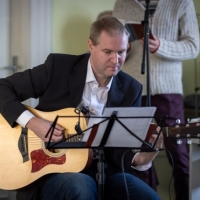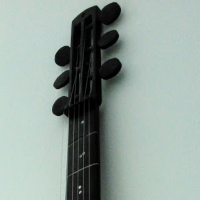DjangoBooks.com
Welcome to our Community!
Categories
- 19.9K All Categories
- 1.1K General
- 475 Welcome
- 59 Archtop Eddy's Corner
- 146 CD, DVD, and Concert Reviews
- 382 FAQ
- 26 Gypsy Jazz Italia
- 24 Photos
- 202 Gypsy Picking
- 21 Unaccompanied Django
- 15 Pearl Django Play-Along Vol.1
- 17 Gypsy Fire
- 45 Gypsy Rhythm
- 1.4K Gypsy Jazz University - Get Educated
- 130 Gypsy Jazz 101
- 222 Repertoire
- 217 History
- 706 Technique
- 51 Licks and Patterns
- 6 Daniel Givone Manouche Guitare Method Users Group
- 20 Eddie Lang Club
- 1.3K Gypsy Jazz Gear
- 796 Guitars, Strings, Picks, Amps, Pickups and Other Accessories
- 454 Classifieds
- 49 Recording
- 62 Other Instruments
- 18 Violin
- 5 Mandolin
- 22 Accordion
- 7 Bass
- 10 Woodwinds
- 341 Gypsy Jazz Events
- 141 North America
- 107 Europe
- 93 International













Comments
To me it sounds like the Selmer/Stimer setup. Here's an older thread with some good discussion: https://www.djangobooks.com/forum/discussion/6364/djangos-electric-guitar/p2
A Selmer with a Stimer.
youtube.com/user/TheTeddyDupont
I've no idea but thank you for introducing me to this album, I just listened to it from start to finish.
Django was much more than just Gypsy Jazz.
youtube.com/user/TheTeddyDupont
Not that I doubt your statement, but i'm curious where your certainty does come from? From listening experience in combination with the 1953 photo showing Django with a Stimer?
The linked thread above quotes a statement by Pierre Michelot that at least casts doubt on the Stimer plus Selmer combination.
To me it sounds like the pickup was mounted near the neck like it's common nowadays with Stimer (style) pickups. It does have some snappy attack you normally wouldn't have there but that probably got introduced by the rest of the chain, f.e. characteristic of the amp used, tape saturation, possible mic overload, mastering etc.
The earlier and "wilder" electric tones where a DeArmond guitar mike positioned way more in direction of bridge. There is a pic of Django where it sits directly over the soundhole for example. In combination with the bass heavy and from modern perspective "muddy" single ended octal field coil amps it did result in a very dynamic but punchy with almost aggressive attack tone ranging from almost clean subtle lines to acoustic explosions when he does chord stabs f.e.
When he switched to Stimer in 1947 it also doesn't sound like he used it at the neck area from the beginning and there are pictures with the Stimer over the soundhole and also screw holes at the top of a Selmer in that area.
The recordings and pictures from the later electric period suggest a placement near the neck but, to my ears at least, yes this position sounds rounder and jazzier, but due to the lack of overtone information and added bass, it also brings out significantly fewer sound characteristics of the guitar or pickup model used so I'm curious how you come to that certainty :)
Considering he would no longer perform live acoustically with 503 it makes me think the pickup covered the soundhole quite a bit. A stimer mounted near the neck doesn't really block the soundhole as much so I'd guess he'd still be able to perform acoustically with it. Who knows what guitar he used in 1953 for this recording tho.
I think it is very difficult if not impossible to determine what guitar/pickup combination Django was using at various recording sessions. He got such very different sounds when he started using a pickup depending on the exact nature of the equipment and the adjustments he was using. The sound he gets from these later recordings is much more subtle than he had employed previously. I think at this stage in his career he was looking for a cooler, modern sound and felt greater confidence in modulating the tone/volume and not the need to try to compete with the other more naturally robust instruments around him.
The main reason I think it is the Selmer/Stimer combination at these recordings is this is the combination he is using in every photo I have seen of him from 1953. The ones that immediately come to mind are:-
(1) January at Montpellier
(2) February with the Tony Proteau Band
(3) March jamming with Dizzy Gillespie
(4) May at Samois
It seems unlikely to me that he would have used a different combination for his final recordings in March and April, 1953.
youtube.com/user/TheTeddyDupont